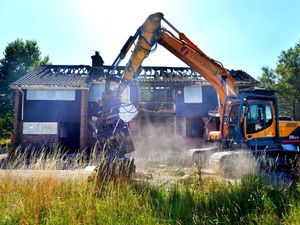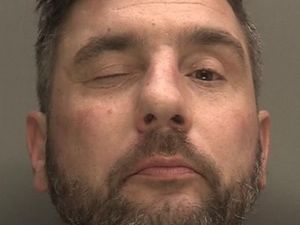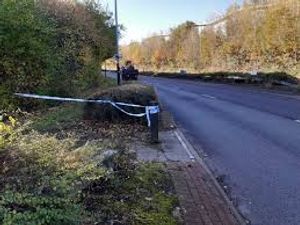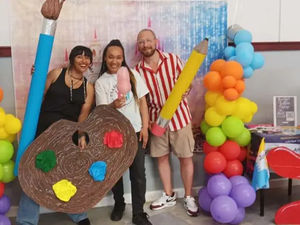About the Young Idea: The Jam exhibition brings back spirit of a generation
You'd better stop dreaming of the quiet life, cos it's the one we'll never know.
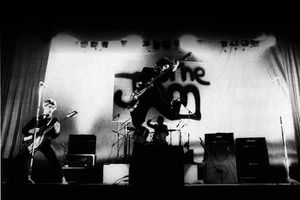
Ahh, the spokesman for his generation – my generation – speaks.
The Jam, Paul Weller, 1982, Town Called Malice, straight to Number One, in the days when that counted for something, writes Keith Harrison.
In 'with a bullet' as Kid Jensen declared on Radio 1, when you could say that on the BBC without getting an angry Twitter mob accusing you of glorifying gun crime.
Thirty-three years on, the opening bars still get 40-and-50-somethings misty-eyed and embarrassingly energetic at weddings, school reunions and office parties. In short, it's a classic.
And in the best traditions of alternative national anthems (think Common People and Ghost Town) it's a catchy tune laced with a pint of working class anger, a singalong chorus and timeless appeal.
Maybe that's why the work of The Jam is still so revered it currently has its own exhibition – About the Young Idea – at London's prestigious Somerset House.
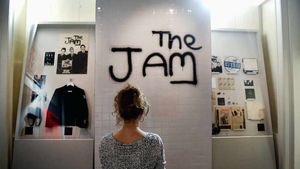
Backed by a new book, a Sky Arts documentary and the obligatory repackaging of the band's greatest hits, the event has been a huge success.
So much so that its run has been extended.
A huge bright poster welcomes visitors at the door with a typical, to-the-point statement: "The best band in the f****** world."
These were the words traditionally used as they were announced on stage by Weller's father – and band manager – John.
No-one ever doubted Weller Snr at the time and 33 years on from splitting up at the height of their fame and success, it's still a valid claim.
"The response has been incredible," a helpful guide tells me, "We've had probably 500 people a day in during the week and double that at weekends.
"I've recognised some people who've been two or three times, bringing their children along to get them into it.
"I've never seen an exhibition have such an effect on people. They soak up every word and every last pin badge or poster, it's brilliant."
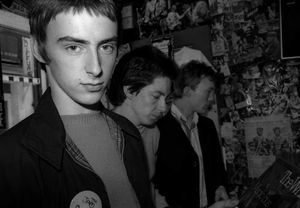
Spawned from the ashes of punk's bright flame, Weller's trio transcended every other band between 1977-82, challenging the destructive creed of the Sex Pistols by asking: "What's the point in saying destroy? We want a new life for everyone."
The exhibition features iconic pictures of the band in their pomp, energising young people battered by Thatcherism, unemployment and general hopelessness of the late 70s and early 80s.
Far fewer people went off to university in those days and for most working class kids, the dole or the laughably-misnamed 'Youth Opportunity Programme' were all that was on offer.
Punk rock had inevitably burned itself out, but in the days before Next, Topshop and 'smart casual' door policies, young people always liked – nay, needed – a movement, an identity.
The Jam had it in spades.
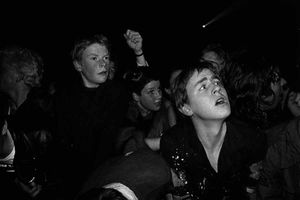
With Weller's throwback mod fashions, sharp suits and defiant attitude, the band offered more than just music; they brought hope, a voice, togetherness – and a determination get things changed.
Most importantly, they produced music that not only captured the spirit of the time, but still endures to this day.
(Not everyone gets it, however. Down-with-the-kids David Cameron has name-checked Eton Rifles as one of his favourite songs, despite the fact it was written about Right to Work marchers being jeered by toffs from his old school. Needless to say, the endorsement didn't go down well with an indignant Weller who asked: "Which part of it didn't he get?")
Fellow Express & Star writer John Corser was an early fan who saw the band live and says: "I've never known a group create such a connection and energy at their concerts. They were incredible."
John wrote a review of the band's show at Stafford's Bingley Hall back in 1981.
From the Bridgnorth Journal, July 10, 1981
A capacity audience at Stafford's vast Bingley Hall were well satisfied by an excellent performance by one of Britain's top rock bands, The Jam.
The Jam made their appearance at 8.30pm and launched into But I'm Different Now and followed up with Boy About Town, from their last album.
Guitarist and vocalist, Paul Weller dressed in casual red shirt and dark trousers, was in fine form and his confident voice and strong guitarwork was a feature of the performance.
Bassist Bruce Foxton, as ever in a grey suit, gave his usual energetic best and delighted the vociferous crowd with his now traditional wild leaps into the air.
An often neglected aspect of The Jam's music is the strength it is given by Rick Buckler's work on drums. His sheer strength and sense of rhythm carries many of the songs, particularly the new single, Funeral Pyre.
The band were at their best on some of the newer songs, Set The House Ablaze, Scrape Away, Man In The Corner Shop, Monday, and Pretty Green in particular.
From Setting Sons came, Private Hell, Little Boy Soldiers and Start. All Mod Con songs were, To Be Someone and David Watts.
The main set also included a couple of lesser known b-sides, Butterfly Collector and Dreams of Children and a frenetic version of the single, When You're Young.
The Jam returned for three encores. The first involved the hit singles, Going Undergound, Modern World and Strange Town. The second old stage favourites Heatwave and 'A' bomb in Wardour Street and finally The Jam's first number one, a watershed in their career, Eton Rifles.
It was a great performance from the band, but it had to be to delight the thousands at Bingley Hll, but hopefully The Jam will not now take the path of many of their predecessors as top British bands, who have gone on to play only the bigger venues and ignored the lower capacity concert halls.
He says: "Before the NEC came along, all the big bands played there at the County Showground. It was basically just a big cattle market, without even a proper floor.
"But the show was incredible. There were no big screens in those days so bands had to work harder to connect with people at these big venues – if you were short, you couldn't see a thing.
"I remember thinking I was going to die in the crush at one point but I wouldn't have missed it for the world."
Back at Somerset House, just a few stops down from the tube station at Euston, businessmen on their lunch breaks mingle with side-burned crowds still bedecked in Harrington jackets, Fred Perry shirts and tassled loafers.
Videos of famous hits play on a giant wall; In the City, Absolute Beginners, Start!, Going Underground and, possibly the band's finest work, That's Entertainment.
A recreation of their equipment at the last-ever show, fittingly in mod capital Brighton, in 1982 sits beneath another big screen and, of the two displays, this is the one that holds people the longest.
David Braithwaite, from Stafford, now 51, recalls meeting the band at the Mander Centre in Wolverhampton.
"We couldn't believe it," he says, "They were playing the Civic that night, I think, and signing albums in the HMV shop if I recall correctly.
"For us, it was like meeting the Messiah! But there was no airs and graces about them, it was just like meeting three normal lads. They were so ordinary. They looked like us and apart from their accents, sounded like us in the way they were.
"It made you think that if this lot have achieved all this coming from some duff town we'd never heard of (Woking) then we could crack it too. Not as a band probably, but as plasterers or whatever.
"It sounds funny now, but you can't really explain to some people how bad it was to be young back then. We needed a voice, call it what you will, and that was The Jam. Still is for a lot of people."
For the band itself, everything ended in late '82 when Weller acrimoniously split the group at the height of their fame.
Drummer Rick Buckler played in bands without huge success, became a furniture restorer for a a while and now lives a comfortable life near Woking, where it all began.
Bassist Bruce Foxton had brief solo success before joining legendary Belfast rabble rousers Stiff Little Fingers, regulars at Bilston's brilliant Robin 2 for many years.
Both band members have featured on-and-off in From The Jam, playing sets from the old days to rapturous receptions in small venues.
Weller has, of course, gone on to Brit awards, stadium tours, critical acclaim and huge solo success.
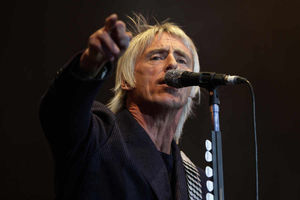
He remains grounded, however, driving nothing more flash than a Mini and making E&S reporter Andy Richardson a cup of tea during a recent interview.
"They say you should never meet your heroes and there are plenty who turned out to be schmucks. But Weller is a class apart. He understands his role in popular culture," says Andy.
He and Foxton have patched up relations in recent years, but he hasn't spoken socially to Buckler for more than two decades.
He is adamant that the band will never reform, despite talk of Glastonbury headlines, Wembley Stadium residences and world tours for mind-boggling amounts of money. "To me it would be against everything we ever stood for," he says, quite rightly, after being asked yet again recently.
"Absolutely, categorically, f****** no."
Uncompromising, no nonsense and spot on; good to see some things about the changing man always stay the same.
The Jam – About the Young Idea, runs until Sunday, September 27, at Somerset House, London.


